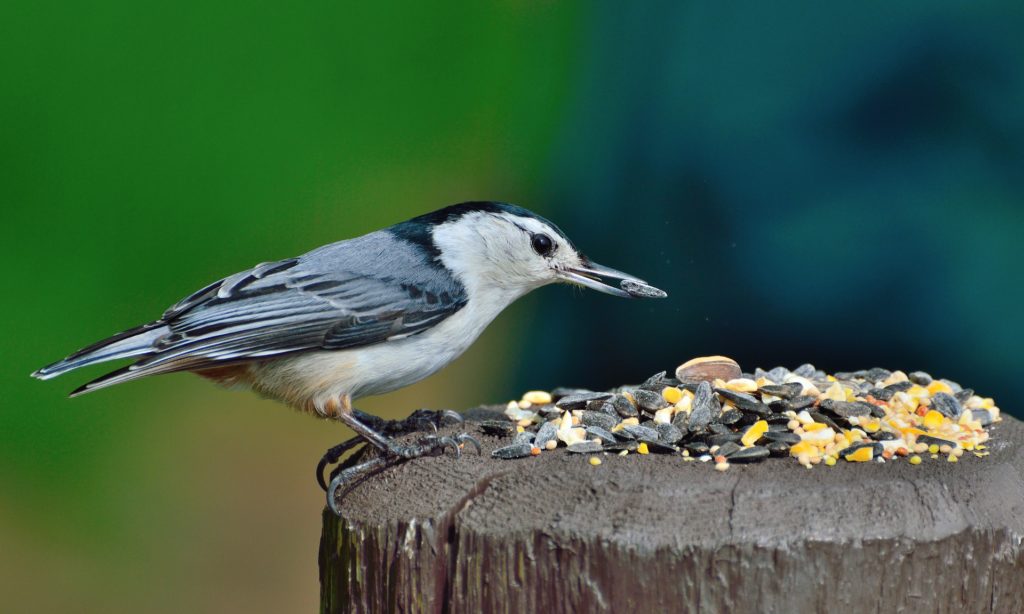
Bird Watching at Great Basin National Park
Share
Located in east-central Nevada on the south Snake Range, Great Basin National Park is bordered by broad valleys with Snake Valley to the east and Spring Valley to the west. The park is outlined by a diverse range of topographical features and a broad elevational range that supports a unique ecology, including salt desert shrubs, spruce forests, and alpine. Great Basin National Park stands out for its range of habitats that attracts abundant wildlife and supports the growth of a variety of vegetation. Of the seven Merriam's life zones found in North America, Great Basin showcases five. Additionally, it contains nine perennial streams forming 30 miles of riparian habitat, including- sub-alpine meadows, aspen, cottonwood, and dense shrub.
Major Attractions at Great Basin National Park
The variety in the landscape creates beautiful views for visitors to enjoy, including streams, lakes, alpine plants, wildlife, different types of forests like groves of ancient bristlecone pines, and several limestone caverns including the famous Lehman Caves. Great Basin National Park holds the only glacier in the Great Basin Desert, the 13,063-foot Wheeler Peak, glacial moraines, Lexington Arch, and 5,000-year-old bristlecone pines.
To go on a hiking trip, follow Alpine Lakes Loop Trail and visit Stella and Teresa Lakes, and spot views of Wheeler Peak. Other popular trails are Mountain View Nature Trail, Sky Island Forest Trail, Osceola Ditch Trial, etc. In addition, people often participate in camping, hiking, cycling, and other outdoor and adventure activities, including birdwatching at Denali National Park.
GET KIDS BIRD WATCHING
Bird Watching at Great Basin National Park
Several types of bird species are found within Great Basin National Park and in its surrounding area. The diverse habitats inside the park's range allow various birds to concentrate in different park regions. As a result, birds like the Common Raven, Northern Flicker, and the American Robin are commonly found in more than one habitat.
For birdwatchers interested in Western Scrub-Jay, Pinyon Jay, Steller's Jay, Say's Phoebe, and Plumbeous Vireo traveling on Lehman Peak Trail alongside Lehman Creek is the best path. Whereas, at an elevation of 10,000 feet, Alpine Lakes Loop is great for spying on different Raptors, including Northern Goshawk, Golden Eagle, Sharp-shinned Hawk, Rough-legged Hawk, Swainson's Hawk, and Ferruginous Hawk.
Wheeler Peak Summit Trail Count is steep and rugged and goes all the way to the top of Wheeler Peak. This is where birdwatchers can easily spot Chukar, Common Ravens, Mountain Bluebirds, Townsend's Solitaire, and Black-billed Magpies.
10 Birds to See at Great Basin National Park
Black-headed Grosbeak
Black-headed Grosbeaks have an orange-red body with a black head and black and white wings. They live throughout the western U.S. Black-headed Grosbeaks are common birds and not at risk of being endangered. They live in deciduous forests. They have a large bill used to crack open sunflower seeds. These birds also eat insects and berries. They lay 3 to 4 eggs and build their nests in trees or shrubs. Black-headed Grosbeaks migrate in late spring and then again in early fall.
White-breasted Nuthatch
White-breasted Nuthatches are white, but also have black and gray markings. They live all throughout North America. Their population is steady with a slight increase. They make their homes near forests, groves, and shade trees. These nuthatches are active and enjoy eating insects and large seeds. White-breasted Nuthatches are small birds with loud voices. They lay 5 to 9 eggs. White-breasted Nuthatches protect their nests to keep predators away. They are not migratory birds; however, they have been seen moving south from the north.
Spotted Towhee
Spotted Towhees are black with bright white spots on their wings and back with orange sides. You can find them in western North America. Their population is common and widespread. They make their homes in open woods, undergrowth, and brushy edges. Spotted Towhees mostly stay on the ground but will climb into lower branches for insects and fruit. They lay 3 to 5 eggs and build their nests on the ground or low in a tree. Spotted Towhees in the north migrate, but the birds in the south are permanent residents.
European Starling
European Starlings are an all-black birds with short tails, a pointed bill, and triangular wings. In the winter, they are covered with white spots. They are the most numerous songbird throughout North America. European Starlings are not considered endangered. They live in parks, farms, and in open groves. These Starlings are sometimes viewed as aggressive as they run along the ground. They eat seeds, berries, and insects. On occasion, they will visit a bird feeder or flowers for nectar. They lay 4 to 6 eggs and will make their nests in odd places. European Starlings that reside in the north migrate south in the fall.
Western Kingbird
Western Kingbirds are gray with yellow plumage. They live across western North America. Their population is stable with some recent increases. Their habitat is on farms, near roadsides, and in other semi-open areas. They enjoy catching flying insects while perched on a tree or utility line. They also eat fruits. Western Kingbirds can be aggressive, chasing away other birds that come near. They lay 3 to 5 eggs in cup-shaped nests sometimes in empty sheds, on utility poles, and under building ledges. Western Kingbirds migrate in small flocks.






































































